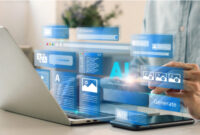Just as I was preparing to publish this, DeepSeek garnered attention, and the discussion was dominated by the plunge in […]
Category: Uncategorized
iOS 18 Is Out Now. Here Are the Best New Features
Apple’s top executives always talk about new hardware and software as the “best” or “biggest” ever, but the actual delivery […]
Can AI answer medical questions better than your doctor?
Fresh research shows a strong preference for human doctors, particularly in the field of psychiatry. Recent studies indicate that, at […]
AI vs. Human Empathy: Machine Learning More Empathetic
A recent study discovered that individuals find it harder to empathize with robot facial expressions of pain compared to humans […]
Google has started to roll out the final beta version of Android 15
Google launches a major update to Android annually, the operating system that powers the world’s most popular smartphones from the […]


